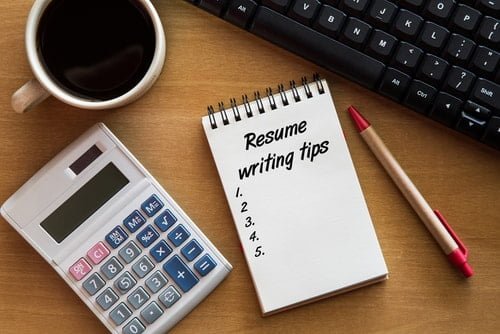Let us find out what exactly is a Resume—
Resume: It is a document created by a person that summarises his education, work experience, skills and achievements for procuring a good job. It is not an autobiography so it should be concise and clear and create an impact on the prospective employer. It is a marketing tool, so it has to demonstrate the quality of a candidate in a professional and polished form.
The resume must have the following things:
- The candidate is employable
- How the candidate can meet the job and organisation’s demands
- The candidate has the right qualifications and education
- A candidate has the right experience and skills
- A candidate has the right professionals for the job
An unprofessional resume that is illegible, confusing, full of errors, will be thrown in a trash bin and the job prospects of a candidate will go for a toss due to this.
A proper and professional resume that is concise, consistent, clear, legible, with proper font, good language, proper formatting and no excessive jargon will catch the eye of a prospective employer and land you in a good job which can help you reach dizzying heights.
Now let us see how to create this perfect, professional resume step by step—
 Length of the resume-
Length of the resume-
There is no set length for a resume but it shouldn’t be too long. One to two pages is sufficient. The only criteria are that it should be well presented.
Order of presenting things in the resume-
Contact details
Opening statement
List of key skills
List of technical/software skills
Personal attributes/career overview
Educational qualifications
Employment history/volunteering/work placements
References/referees
Let us discuss what would be written in each of the above things—
Contact details—this should include the candidate’s name, email address and contact phone number.
Opening statement- it is the summary of the person, his education and his work and how he will be useful for the applied job. It should be of 6 lines and in the first person.
Key skills and strengths- it should include 10-15 skills that link a candidate’s experience with the job applied for.
It should include:
The jobs were done in the past
Education
Any work placements
Any volunteering work is done
Technical and software skills-
This should include a list of names of software or technology the candidate knows how to use like
- Word processing or spreadsheet software
- Programming languages
- Tools
Personal attributes-
Things to be added in this section are the candidate’s positive points like
Reliable
Honest
Fast learner
Easy to get along with others
Leadership qualities
Team spirit etc
One can include 3-5 personal attributes
Educational history-
This should show a candidate’s highest level of education. One can include academic achievements. Example -school or class captaincy, awards won or groups of which a person has been part of.
Employment history-
The candidate should start from the most recent job and then go back from there. The candidate should give the position title and dates until the time he worked there. If a person hasn’t worked then he can add the following things-
- Work experience is done in school
- Internships are done during college
- Volunteer work is done
A candidate can list his achievements done in a job or internship which will help him get the job applied for.
References/ referees
The candidate should list two people who can positively recommend him as an employee. They should be of people with whom he has worked before. Their names and position titles should be listed.
A testimonial can be added to the references. A colleague, teacher, or employer can write a few sentences about the candidate, Ideally, these people should be a part of the references given.
What should not be added in the resume-
Private information like birth date, gender, address, ailments, health status shouldn’t be added in the resume. Don’t make typos or add images or graphics or use fancy formatting in the resume. By adhering to these rules one can create the perfect resume.
-Dr. PREETI TALWAR




